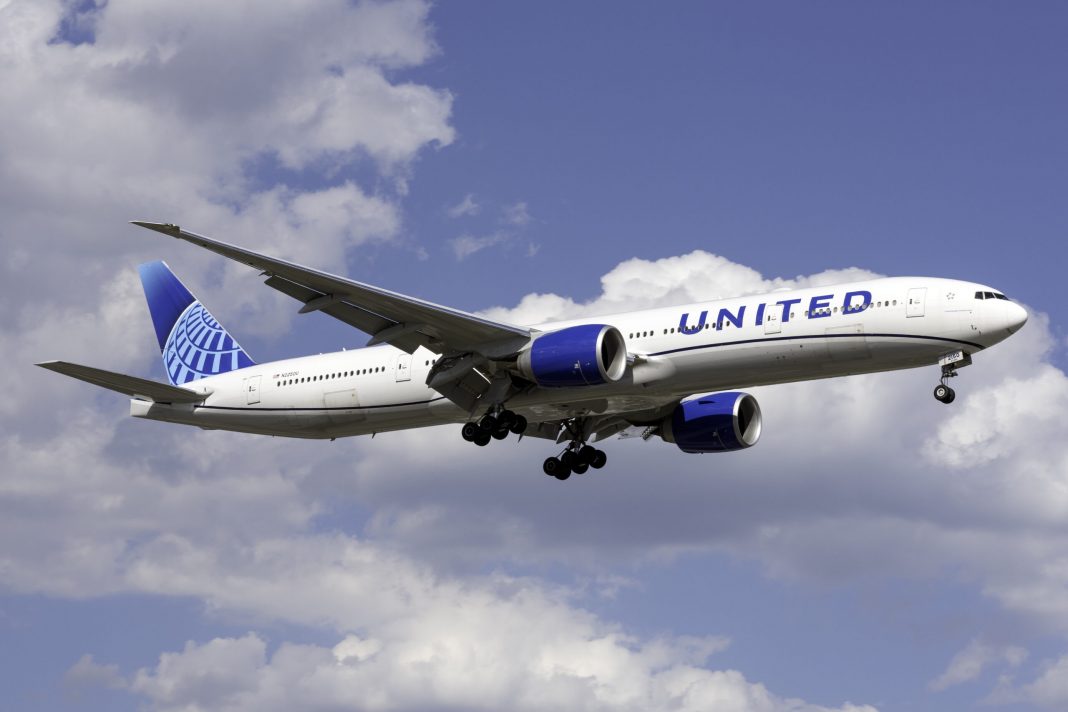United Airlines has decided to use certain Boeing 777-300ERs to increase its term loan facility with the United States Department of Treasury. The airline, which first borrowed under the loan in September, can now access up to $7.5 billion under the facility.

United pledges 777-300ERs
Back in November, United Airlines was given a choice by the Treasury Department. If it pledged certain Boeing 777-300ER aircraft, it could increase its total available amount under the loan facility to $7.5 billion. Of this, $7.16 billion was, in the aggregate, secured by certain route authorities, some slots and gate leasehold, and other assets.
However, if United pledged certain Boeing 777-300ER aircraft, certain flight simulators, and met other unspecified conditions, it could increase its loan facility by another $340 million.
On December 8th, United and the Treasury Department amended the loan agreement to include an extra $331 million after the carrier pledged certain Boeing 777-300ER aircraft and flight simulators and related assets.

United’s total amount under the loan facility is $7.491 billion. Of which, the carrier has borrowed $520 million. As of December 8th, the airline has not borrowed any additional amounts. All loans borrowed under the term loan facility will be due on September 28th, 2025. The interest rate is variable and is set at the London interbank offering rate (LIBOR) plus a margin of 3.00% per annum.
A more conventional form of financing
Securing owned aircraft for a loan is nothing new in the airline world. It is one of the staples of the industry when an airline needs to raise any funds. Without the government loan, United would have gone to the private market to secure funding by pledging these aircraft and other associated collateral. United Airlines has not specified how many Boeing 777-300ERs it has pledged as part of this loan.

Earlier this year, United Airlines also took a more unconventional route to raise funds. It leveraged its frequent flier program to the tune of billions of dollars, which helped shore up the airline’s liquidity over the summer.
United is still burning cash
In mid-November, amid a deceleration in bookings and a growing number of cancelations, United Airlines pulled back some fourth-quarter capacity but maintained an expected average daily cash burn of $15 million to $20 million per day, plus $10 million of average debt principal payments and severance payments per day.
Having access to all of this funding does not mean United has to take on all of that debt. Instead, it has the option to if it needs to. And, right now, having the option is much better than not having it at all.
The Boeing 777-300ERs
The Boeing 777-300ERs are some of United’s newest aircraft. Onboard, these planes have room for up to 350 passengers. This includes 60 in Polaris business class, 24 in Premium Plus (premium economy), another 62 in extra-legroom economy, and finally 204 in standard economy. United has 22 Boeing 777-300ERs, and the first of these aircraft only arrived about three years ago.

United typically flies the 777-300ERs on some of its most high-profile routes, such as to Shanghai, Tel Aviv, Hong Kong, New Delhi, and more. These planes have more Polaris business class seats than any other aircraft in United’s fleet.
Do you think United Airlines made the right decision by upping their available funds under the government loan facility? Let us know in the comments!
[ad_2]
Source link


